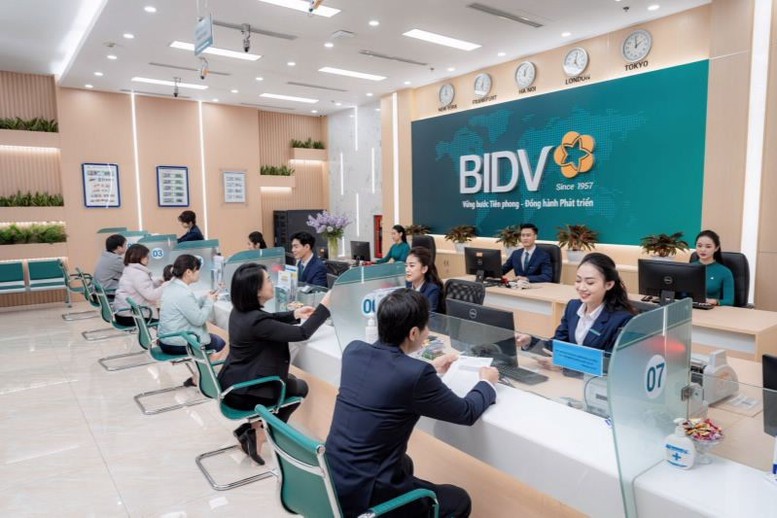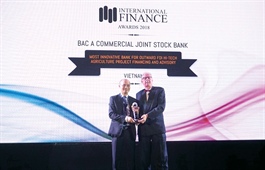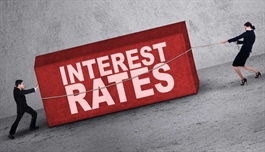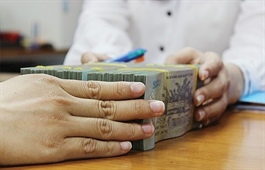Strategies to suit banking’s challenges
Strategies to suit banking’s challenges
The overall picture of the banking industry in 2020 and into 2021 has revealed both strengths and weaknesses. At the end of the third quarter, data from the General Statistics Office (GSO) showed that credit growth of the entire industry in our country reached 5.12 per cent after nine months, corresponding to less than 40 per cent of the annual growth plan from the beginning of the year.

By Dr. Nguyen Dai Lai - Former deputy director Banking Development Strategy Department, State Bank of Vietnam
|
However, due to the impact of the pandemic on the economy, low credit growth came with lower demand. The calculation of the Organisation for Economic Cooperation and Development has suggested that the global economy will decrease by 4.5 per cent by the end of the year. Accordingly, widely expanding economies such as Vietnam will be affected and forced to not only rethink their economic structure but also the structure of the capital and credit markets.
Data on the National Business Registration Portal shows that in the first 11 months of 2020, Vietnam had nearly 124,300 newly-established enterprises, down 1.9 per cent from the same period in 2019. At the same time, about 93,500 businesses withdrew from the market, about 44,400 of which registered to suspend their operation for a definite period, up 59.7 per cent over the same period in 2019. The economic scale has increased by more than 40 times in 2019 and the GDP per capita increased by nearly 30 times compared to 1990. Average economic growth in 2016-2019 reached 6.8 per cent per year, higher than that of 1990.
This relatively high growth rate includes the very strong growth of industry and trade, with the average export growth rate estimated at 10.5 per cent per year. The average growth rate of retail sales is estimated at 9.1 per cent per year, including a fast-developing e-commerce scene with an average growth rate in excess of 27 per cent.
Despite low growth this year, Vietnam still presents the opposite of the very bleak economic picture of the world, as there are no negative growth figures. Vietnam has been the only country in ASEAN and among very few countries in the world achieving positive growth after 11 months in 2020.
This GDP structure also reflects the structure of credit absorption in each sector of the economy. Despite the difficulties, reaching the fourth quarter, Vietnam’s economy has had seen many victories as the government simultaneously conquered COVID-19 and developed those sectors that have not been or have been less affected, by making use of new forms of business such as automation.
Thanks to these efforts, the demand for credit has increased significantly since the third quarter of 2020.
The lending interest rates of the entire banking industry have fallen to a record low and many growth items come partly from valuable papers, such as investments and bonds. However, these measures are risky, which transforms the issue of credit growth into a significant problem, not just for 2020 but also the next years. It is thus necessary to take a look at healthy policies on credit demand increase and credit risk management for the whole banking industry, with a strict approach from the end of this year.
Currently, the banking industry is seeing liquidity in the market, with very low credit prices and weak absorption of the market. Credit growth for 2020 may reach around 9.5 per cent and, although not as high as in previous years, it is still the most important driving force for economic growth at around 3 per cent.
On the downside, there is a potential risk of bad debts in the credit institution system. Nonperforming loans increased even as the number of on-balance bad debts on the books stood at around 2 per cent per year because credit institutions were “enjoying” relying on calculated conditions. Under this circular, credit institutions could restructure debts, extend repayment terms, and keep customers’ debt groups intact.
Along with that, nonperforming loans remain hidden in the global financial and credit market that has been developing through contactless and cashless payments as well as cryptocurrencies.
The State Bank of Vietnam is required to find solutions to deal with the scenario through strict legal supervision in order to decide upon a legal framework for all different types of finance as technology is booming in Vietnam.
Currently, bad debts are potentially risky, but because the main source of bad debts lies mostly in manufacturing, trading, and service enterprises, it will be easier than bad debts in sectors such as real estate and securities, which many credit institutions used to deal with in the past. However, the profitability of credit institutions will tend to decrease, although the number of returns in their credit books may increase.
In 2021, credit institutions should focus on strengthening risk management in short-term credit growth. In the medium and long term, it is necessary to restructure the loan portfolio to reduce the proportion of credit assets and increase non-credit assets and revenue from non-credit services. Credit risk management should happen according to the terms of each group and individual.
The banking sector also needs to focus on the strong development of debt selling businesses, including both good and bad debts. Along with that, credit institutions need to strengthen human resources to speed up the digital transformation and accelerate the completion of big data systems, which can then be used to perfect their products.




























